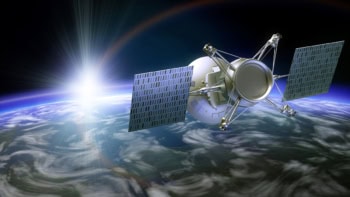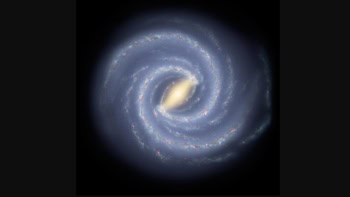
Astronomers have found that whole clusters of galaxies are moving in convoy towards a single point in the sky. This unexpected motion appears to be separate from the expansion of the universe and the researchers even suggest that a force beyond the visible universe is the culprit. The discovery has been named “dark flow”.
Cosmologists have already observed two distinct effects caused by invisible entities in the universe: dark matter is known to affect the rotation of galaxies and dark energy seems to be causing the expansion of the universe to accelerate. Dark flow is the latest addition to this shadowy family.
A new study led by Sasha Kashlinsky, of the Goddard Space Flight Center in the US, reports the discovery after analysing small fluctuations in the cosmic microwave background (CMB). The CMB is the afterglow of the Big Bang and shows that the temperature of the universe is the same wherever you look in the sky, 2.7° above absolute zero. However, surveys by NASA’s Wilkinson Microwave Anisotropy Probe (WMAP) have previously revealed small-scale variations to this uniform temperature of about one ten thousandth of a degree.
Independent motion
Kashlinsky’s work shows that these temperature fluctuations are shifted in the direction of a number of galaxy clusters. This implies that the clusters are moving with reference to the rest of the universe, a motion that is therefore independent of its expansion. The result is significant because it cannot be accounted for by the known distribution of matter; something outside of the visible universe may be pulling on the clusters.
“The motion cannot be explained within the standard framework and so has strong implications. So much so that we didn’t believe it for a long time, we were checking and re-checking,” Kashlinsky explained.
The mysterious motion, originally noted in 2008 using the three-year WMAP survey, is now confirmed by a more comprehensive five-year study. Expanding the sample size to 1000 galaxy clusters, Kashlinsky’s team measured the dark flow, at approximately constant velocity, out to 800 Mpc. Their previous study tracked motion to just 300 Mpc.
Bubble siblings
The answer to the source of dark flow might be found in the universe’s infancy. “What we believe is happening is that we are measuring the influence of the parts of space–time that were there before the inflation of the universe,” Kashlinsky told physicsworld.com.
The theory of inflation suggests that the early universe was like cosmic foam made up of many bubbles. One of these bubbles underwent a huge and rapid expansion, when the universe was just 10–36 seconds old, to become the universe that we see today. It is our neighbouring bubbles that Kashlinsky holds responsible for these migrating galaxy clusters.
“Inflation says that if you go to sufficiently large scales you should see structure that is outside this bubble, outside of our universe. If we live in such a world these structures would cause this motion and we suspect that this is what we are seeing,” he said.
The findings are published in Astrophysical Journal Letters.



